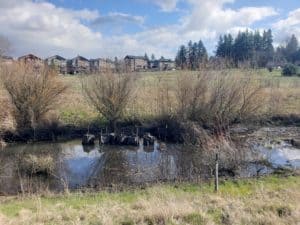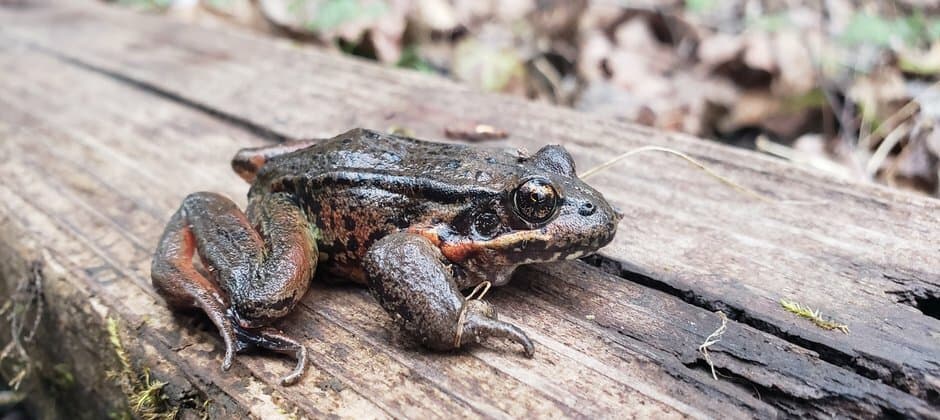Share this article
Untapped opportunities for conservation lie in cities
Soaring skyscrapers and subway tunnels may seem like the polar opposite of natural habitats and ecosystems, but some researchers believe that cities hold untapped opportunities for biodiversity conservation.
As managers look at improving urban environments for animals, they say they need to look both at what is currently working and what the future may hold.
“If species are evolving to move into cities, anything we can do to manage them is a moving target,” said Max Lambert, a postdoctoral researcher at the University of California, Berkeley and one of the two authors of a perspective piece published recently in Nature Ecology and Evolution that outlines some of the guidelines for working evolutionary ideas into urban ecosystem conservation and management.
“These species are evolving in this novel context,” added Colin Donihue, a postdoctoral research fellow in biology at Washington University and the other author of the piece. “If we don’t take an evolutionary perspective, we might end up being less effective than we should be.”
A growing number of researchers are beginning to treat cities as ecosystems, putting aside the traditional dichotomy that nature and civilization are opposites. Both Lambert and Donihue have studied wildlife in human-modified environments, including the way suburban estrogen that may arise from human products or gardening choices may be causing an imbalance in the sex ratios of frogs or the way Aegean wall lizards (Podarcis erhardii) change their morphology, foraging modes and diets in human-built rock walls in Greece.
As urban areas continue to grow across the world, swallowing up surrounding natural areas, Donihue said, it’s increasingly important to consider how cities can create space for wildlife that would otherwise lose natural range from human expansion. Some species, like coyotes (Canis latrans) and mountan lions (Puma concolor), have naturally adapted to urban areas on their own. But Donihue notes that some researchers have suggested that by taking a more active role in what species move into our backyards, cities can be used as “conservation arks” if done right.
“We might be able to use cities for species of conservation concern,” he said.

An urban stormwater pond in Portland, Oregon has experimental enclosures to test if red-legged frogs can adapt to urban pollution.
Credit: Max Lambert
Lambert points to the case of northern red-legged frogs (Rana aurora) which may have adapted to stormwater ponds in parts of Portland, Oregon. These frogs are rare in this area due to the loss of habitat connectivity and only live in a few of these drainage ponds. But he and others are working to determine how to optimize conditions to help conserve the species in the state, either by building better connectivity between drainage ponds or by translocating some storm water-adapted frogs to new areas.
Species like Asian house geckos (Hemidactylus mabouia) can be found in cities across the United States, but they are invasive, originally hailing from sub-Saharan Africa. But instead of allowing the same generalist species to live in cities across the U.S., wildlife managers could introduce a species like the Tokay gecko (Gekko gecko), which is currently declining in much of its range in Southeast Asia, to those cities.
Similarly, gold dust day geckos (Phelsuma laticauda) have invaded urban parts of Hawaii, but other similar species from Madagascar that face conservation challenges could be introduced to cities to help them persist.
Donihue said that these type of examples are only speculation at this point, and studies to determine any potentially negative effects of introducing nonnative species should always be taken into account. Where possible, species normally native to a given area should be considered first in such cases, he said.
Lambert added that the reason that some species disappear as cities grow isn’t always because they can’t adapt to these areas. Some wildlife may have been destroyed in the process of land clearing, for example.
Managers should also take into account evolution when considering using land in cities for conservation. Lambert said that wildlife managers should look at what barriers in cities are stopping wildlife from moving into town. These could be anything from adding green corridors to bio-architecture, or designing or modifying buildings and other structures in an ecologically friendly manner.
“It’s really a call for researcher to frame what they’re thinking more in an evolutionary sense,” Donihue said. Recent research, some of which he has been involved with, shows that evolution can happen on a much quicker timescale than biologists previously believed, he said.
For more on urban wildlife, log in to the Member Portal and check out the current edition of The Wildlife Professional.
Header Image: Northern red-legged frogs are doing well in several stormwater ponds in Portland — some of the only areas they are found across the state of Oregon. Credit: Max Lambert








